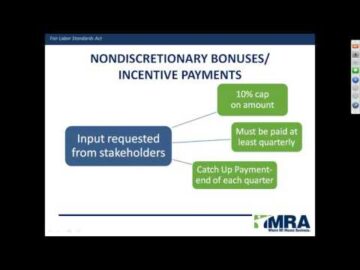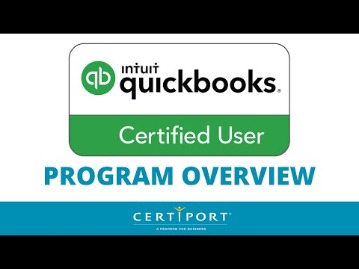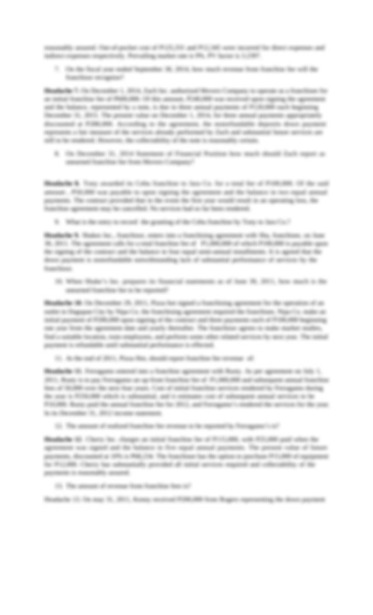
Entities are encouraged to report cashflows using the direct method because it is said to be more useful. This raises the question as to which profit or loss figure should be used. First, owners and investors can contribute money to the business in exchange for a percentage ownership in the company.

Cash & cash equivalents are essential components of a balance sheet and resemble a company’s financial health. It helps pay off short-term obligations very quickly without any need for borrowing. It is also essential for the shareholders as it can pay them dividends. Under IFRS, cash includes physical cash on hand, demand deposits, and short-term investments readily convertible to known amounts of money and subject to an insignificant risk of change in value. For the most part, cash and cash equivalents do not include equity or stock holdings because the price of those assets can fluctuate significantly in value.
Classification of Cash and Cash Equivalents
CCEs are important to individuals and businesses because they provide an easily accessible source of funds to meet short-term financial obligations, such as paying bills or covering real estate expenses. CCE can also be used to capitalize on emerging investment opportunities or to support growth and expansion. To help users assess solvency, the balance sheet reports the balance of cash and cash equivalents. A weakness of statements of cashflow is that they do not distinguish between discretionary and mandatory cashflow. By disclosing the mandatory cashflow, users can see the available free cashflow.
- The foreign currencies must be converted into reporting currency for accounting purposes.
- Financial analysts spend a lot of their time “undoing” the work of accountants (accruals, matching, etc.) to arrive at the cash flow of a business.
- Again, even though we say “cash,” we mean money that is available to spend right now or nearly right now.
For the year, Vertex raised its sales outlook to $9.7 billion to $9.8 billion. VRTX stock analysts had predicted adjusted earnings of $14.56 per share and $9.76 billion in sales. Abrahams has a sector perform rating on VRTX stock, but raised his price target to 343 from 325. Trikafta sales topped expectations, though revenue from older products came in light, to in-line with Street estimates, RBC Capital Markets analyst Brian Abrahams said in a note to clients. On a year-over-year basis, Trikafta sales climbed 18% while sales of the company’s older drugs fell 17%.
$12.6 Billion In Cash, Equivalents
You can see on the top line of the balance sheet that the value of CCE fluctuates as these two factors play out in terms of higher oil and gas prices and periods of high capital expenditure. Working capital is used as an indicator of a company’s short-term financial health, whereas CCE tells you whether a company actually has the money available now, or within 90 days, to pay for an expense. Consolidation can be done in this case because the drivers of the cash and investments roll-forward schedules are identical (i.e. the same net impact on the ending cash balance).
It is generally available in a company’s balance sheet under the current asset section with the same name as cash and cash equivalent, and only the overall value is present. Cash and Cash Equivalents are items on a company’s balance sheet that refer to the value of assets held in cash or easily converted to cash. Furthermore, the cash and cash equivalent line item is always treated as a current asset and is the first item listed on the assets side of the balance sheet. In its third quarter 2022 condensed consolidated balance sheet, Apple Inc. reported $27.502 billion of cash and cash equivalents.
Cash includes legal tender, bills, coins, checks received but not deposited, and checking and savings accounts. Cash equivalents are any short-term investment securities with maturity periods of 90 days or less. They include bank certificates of deposit, banker’s acceptances, Treasury bills, commercial paper, and other money market instruments. They include such things as balances in savings accounts and money market funds, short-term certificates of deposit, and short-term government securities (e.g., treasury bills). Money market funds are mutual funds that invest only in 2021 pay period calendar could include 27 paychecks. Money market funds are an efficient and effective tool that companies and organizations use to manage their money since they tend to be more stable compared to other types of funds, such as mutual funds.
Cash and cash equivalents are important components of a company or individual’s financial assets, as they represent highly liquid assets that can be easily converted to cash when needed. Although cash and bank deposits are common examples of cash and cash equivalents, there are other highly liquid asset classes, such as money market funds and treasury bills. Understanding the difference between cash and cash equivalents, as well as the different cash equivalents, can be important for financial planning and investment decisions. Cash and cash equivalents (CCE) refer to highly liquid assets that can be easily converted to cash. This asset class typically includes physical currencies, bank deposits such as savings and checking accounts, money market funds, and other short-term investments with maturities of three months or less.
Understanding Cash and Cash Equivalents (CCE)
Whereas, cash equivalents are items that can be turned into cash conveniently. Operating cashflows may be presented using the direct method, which shows the gross cash receipts or payments from operations. Alternatively, the entity can calculate the cashflows indirectly by adjusting net profit or loss for non-operating and non-cash transactions and for changes in working capital.
- Investigating a company’s cash position is a good way to understand whether they are well prepared to deal with short-term cash needs.
- In the table above, the fifth column represents the value Apple assigned as cash and cash equivalents.
- Certificates of deposit are a popular cash equivalent among investors looking for predictable, low-risk returns to their cash holdings.
- The investment must be short-term, usually with a maximum investment duration of three months or less.
- If a company wants to earn some return on its money as it plans its long-term strategy, it can choose to invest some of its capital in cash equivalents.
Apple classifies its broad assortment of financial instruments as cash, Level 1 instruments, or Level 2 instruments (based on how the item is valued). Because of the uncertainty regarding client creditworthiness, outstanding account receivable balances are not cash equivalents even if the invoice is due or shortly to be due. Even if a debt is ready for collection, there is no guarantee the client will be able to pay.
Cash equivalents are short-term investments that can be easily liquidate, carry low risk of loss, and have active marketplaces to ensure quick transacting. These instruments can easily be converted to cash but are classified differently because they are not actual claims of ownership of cash. In Note 3 to its financial statements, Apple provides a substantial amount of information regarding what comprises this cash and cash equivalent balance.
Why Do Companies Hold Cash Equivalents?
This includes the money in company’s bank account, petty cash drawer, and register. According to the 2021 financial statement by Apple Inc, its total cash and cash equivalents are $34,940 million. This is because these assets’ prices are restricted by the short-term interest rates set by centralized banks like The Federal Reserve in the U.S. So, as money market assets get closer to their maturity date, market forces will guide their prices toward set rates.
SANDRIDGE ENERGY, INC. ANNOUNCES FINANCIAL AND … – PR Newswire
SANDRIDGE ENERGY, INC. ANNOUNCES FINANCIAL AND ….
Posted: Wed, 02 Aug 2023 20:15:00 GMT [source]
As of Sep. 30, 2022, Berkshire Hathaway had $28,869,000,000 in cash and cash equivalents. Because cryptocurrencies are not legal tender and not backed by governments or legal entities, U.S. GAAP does not treat cryptocurrency as cash, foreign currency, or cash equivalents. In accounting, cash refers to cash such as petty cash (coins and paper money) and cash in hand. In response to statement users’ needs for assessing earning power, accountants report material amounts of investment income separately from operating income. Another example of a cash equivalent is short-term commercial paper (negotiable notes receivable issued by other companies).
Examples of investments that typically meet these criteria are short-term, highly liquid investments such as commercial paper and Treasury bills. The requirements for classification intend to ensure that only genuinely short-term and low-risk assets are in this category. Cash and cash equivalents are found at the top of a company’s balance sheet, under current assets. However, it’s important to note that not all current assets are cash and cash equivalents, as entries like accounts receivable will also be there.
They also help companies maintain healthy cash flow, which is important for meeting their financial obligations and keeping their operations running smoothly. If Treasury bills are given as a mortgage for a loan, it does not fall under the list of cash equivalents. They are restricted concerning funding bylaws and investment objectives.
Uses of Cash Equivalents
If the company is not thinking of an acquisition, it should invest in short-term or long-term investments to earn interest income. Cash and cash equivalents is a useful number that can help investors understand whether a company is liquid enough to cope with larger or unexpected short-term cash needs. What’s considered a reasonable number of cash and cash equivalents to have on hand varies greatly from industry to industry.

They are usually made of metal and come in a variety of denominations, such as coins, nicknames, coins, and quarters. It signifies the amount of money that is used for making payments of trivial outlays, and that amount may vary for every organisation. They can be used to make payments for small business dues and debts as well.
Finance Strategists is a leading financial literacy non-profit organization priding itself on providing accurate and reliable financial information to millions of readers each year. Access and download collection of free Templates to help power your productivity and performance. Harold Averkamp (CPA, MBA) has worked as a university accounting instructor, accountant, and consultant for more than 25 years. Ariel Courage is an experienced editor, researcher, and former fact-checker. She has performed editing and fact-checking work for several leading finance publications, including The Motley Fool and Passport to Wall Street.

The above extract from the financial statement of Tesla Inc. shows a cash and cash equivalent of $17,576. The cash-to-total asset ratio of the company is 9.95% which is not very significant. Similarly, the cash-to-sales ratio is 11.74 %, which indicates that most sales are in credit. The company is not thinking of any heavy investment in the future as its cash reserves are unlimited compared to the total assets. A note provides the breakup of the overall sum at the end of the financial statement. The cash and cash equivalent will generally bear a number beside its total, which describes the serial number in the notes section to understand the breakup of the cash and cash equivalent.





